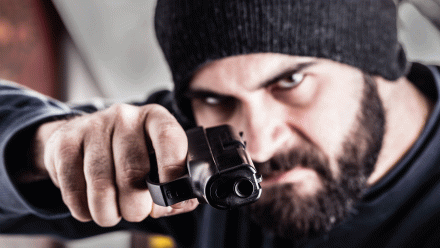A school bookkeeper in Georgia encountered a gunman with an assault rifle in the school building. She tried to keep the man calm by talking to him respectfully, and persuaded the gunman to put down his gun and turn himself in, according to her statements in an ABC News article.
“When confronting a suspicious person, what you say is important, but how you say it is paramount,” Lee A. Dean writes in Dealing with Dangerous People, a resource for church leaders. His words ring true in light of the Georgia story. “The best approach is to speak quietly but firmly and to be respectful of the person’s dignity and humanity. This approach keeps the situation from becoming overly disruptive and also acknowledges the dual needs of protection and redemption.”
To prepare for and protect your church from a gunman, Dr. Jamie Aten offers tips in “What’s Your Church’s Plan for an Active Shooter?“
If a person who seems dangerous enters a church building, Dean suggests the following in Dealing with Dangerous People:
The keys to accomplishing [removing a dangerous person] with minimal disruption and harm are knowing the right time to move, knowing what to say and how to say it, and understanding that physical contact is a last resort.
Should you remove the person or let them stay? Inexperienced security personnel may be tempted to always storm in and drag away a suspicious person. That’s not the right course of action, says [Dale] Annis, [founder of Church Security Services].
Annis says he recently has received “a dozen” reports around the country of people walking onto the stage and taking over a worship service. If the disruptive person is violent, that person needs to be quickly removed. If the person is nonviolent, the pastor may simply declare that the service is over and ask worshipers to quietly file out of the building. “While this is going on, our team members cordon the guy off and continue to ask everybody else to leave,” says Annis. “This way, we’re taking away his audience.”
But in most other circumstances, action is necessary. When weapons are observed or when someone makes a specific threat to the church or its people, action must be taken immediately. If the suspicious person has mingled among a larger group of people, action may be warranted.
“The first thing is to make a request that the person move away from the general population,” says [Michael] Hodge, [president and owner of Michael A. Hodge and Associates, a security management consulting firm]. “If they refuse to do so, that’s a red flag that this is a serious issue.”
Richard Hammar wrote about a time when a church restrained a disruptive woman during a church service and offers some options for churches to consider.





